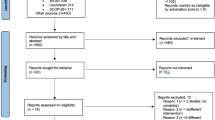Abstract
Data sources Medline, Embase, the Cochrane Oral Health Group's Trials Register, CENTRAL, ClinicalTrials.gov, the National Research Register and Pro-Quest Dissertation Abstracts and Thesis databases.
Study selection Randomised controlled trials (RCTs) non-randomised, or quasi-randomised controlled trials, prospective and retrospective studies involving the assessment of success or failure of palatal implants or palatal mini-screws for orthodontic anchorage reinforcement were considered.
Data extraction and synthesis Two reviewers independently selected the studies, extracted data and assessed risk of bias. A narrative synthesis was presented.
Results Twenty-seven studies (four RCTs, 12 prospective and 11 retrospective studies) were included.
Conclusions No clinically meaningful difference in failure risk seems to exist between palatal implants and mini-screws, however the quality of the available evidence is very low. The studies included between 9 to 384 palatal implants or mini-screws with follow up period ranging from 2 - 35.6 months (median = 17.9). The risk of failure (18 studies) ranged from 0.0 - 26.1% (median 6.0%). The risk of failure in the four RCTS ranged from 2.5 -26.1% (median = 8.8%).
Similar content being viewed by others
A Commentary on
Kakali L, Alharbi M, Pandis N, Gkantidis N, Kloukos D.
Success of palatal implants or mini-screws placed median or paramedian for the reinforcement of anchorage during orthodontic treatment: a systematic review. Eur J Orthod 2019; 41: 9-20. Mar 28. doi: 10.1093/ejo/cjy015. [Epub ahead of print] PubMed PMID: 29608666.

GRADE rating
Commentary
The objective of the systematic review by Kakali and co-authors1 was to give an update on the failure rates of palatal implants and palatal mini-screws used for orthodontic anchorage purposes. Palatal implants refer to mini implants with a diameter of 3.3 to 4.5 mm and mini-screws have a diameter of 1.1 to 2 mm. The median failure risk of palatal implants was 6.0% (range: 0.0-26.1%) for a mean follow-up of 17.9 months. The median failure risk of mini-screws was 6.1% (range: 0.0-33.3%) for a mean follow-up of six months.
In this commentary we critically appraised this systematic review using the AMSTAR 2 and ROBIS tools,2,3,4 which have been developed to assess respectively the methodological validity and the risk of bias in systematic reviews. Two reviewers (RMR and LI) applied these instruments independently. Differences in scoring between these operators were resolved through discussions. The final scores are reported in Tables 1 and 2. Key limitations identified with the AMSTAR 2 and ROBIS scores are summarised in Table 3 and are further explained under here. Additional limitations of the review are also listed in this table.
The authors stated that this protocol was not registered. This is a serious limitation, because prospective registration or publication of systematic review protocols avoids unintended duplications, promotes transparency, reduces the risk of bias as a result of selective reporting of outcomes,5 and avoids other post-hoc changes in the conduct or reporting of the review. Pilot testing of the research methods, which is important for the fine-tuning of these procedures and the calibration of reviewers was also not reported.
High concerns were raised regarding the study eligibility criteria, ie,1 eligibility criteria were under-reported, which makes it difficult to replicate this review2 stating that 'all observations periods were accepted' is an important limitation, because this implies that studies in which orthodontic forces were applied for very short time periods, eg less than three months, were also included in the review. In such a short time span it is often impossible to complete all implant related anchorage objectives,3 eligible outcomes were not given4 and no selection criteria were given for the setting in which the studies were conducted.
The authors did not define their primary outcome 'success or failure' of palatal implants or mini-screws. This is a serious shortcoming, because different definitions of success have been used in the literature.6 Issues that influence definitions of success include:
-
1.
success according to different stakeholders. Success can vary according to what is important for pertinent stakeholders. It is therefore necessary to consult a wide variety of stakeholders when defining outcomes, eg not just researchers but at least also patients and clinicians. This consultation of stakeholders should take place at the start of the development of the review protocol
-
2.
success and time span. One can consider an implant successful for the time period that it has been inserted in the palate, for the period that it has been used for orthodontic purposes or other time spans
-
3.
success and the fulfillment of treatment objectives. A clinician probably considers a palatal implant or mini-screw successful if these devices permit the fulfillment of all implant-related anchorage objectives. This success comes with a different time span than implants that are left in the mouth following the completion of these objectives and whose success is measured at the removal of these devices.
-
4.
Success and usability. Implants have been defined in the literature as successful when they can fulfil anchorage objectives with or without mobility or even with displacement. Overgrowth or persistent inflammation of gingival tissues can make implants unusable and therefore unsuccessful notwithstanding their immobility. Not having defined what success is and what it is not can affect the outcomes and the validity of this systematic review.
Cochrane7 states: 'It is critical that outcomes used to assess adverse effects as well as outcomes used to assess beneficial effects are among those addressed by a review'. Assessing adverse effects of interventions was planned in the review, but the authors did not report the findings on these effects in the included studies. This issue should have been assessed to give a balanced perspective on the use of implants and mini-screws for orthodontic anchorage.
In addition, the authors did not present their search strategies for the various databases, did not report on keywords and/or MESH terms and did not report whether the search strategy was pilot tested. A list of excluded studies with rationale was also not given. Not reporting on these items jeopardises the reproducibility of the review. The funding sources of each eligible study in the review were also not recorded. This information could have been helpful to separate the results of commercially funded studies from those of independently funded studies.
The authors implemented the Cochrane Collaboration's tool for assessing Risk Of Bias (RoB) in the included randomised trials,8 but did not apply Cochrane's preferred tool for assessing risk of bias in the included non-randomised studies of interventions.9 Instead they scored risk of bias for these latter group of studies with a tool that was developed for quality assessments of systematic reviews and not for risk of bias.10 Besides assessing risk of bias with an inappropriate tool, the authors did not grade the overall quality of evidence of outcomes of both the randomised and non-randomised studies, for example using the GRADE approach.11
This systematic review addressed a research question that is important for orthodontic patients and clinicians and scored promising low median failure rates. However, our risk of bias and quality assessments identified crucial limitations in this review. Clinicians should consider these limitations, the wide ranges that come with the median failure rates (not means), and patient-important outcomes prior to implementing palatal implants or mini-screws into practice.
References
Kakali L, Alharbi M, Pandis N, Gkantidis N, Kloukos D. Success of palatal implants or mini-screws placed median or paramedian for the reinforcement of anchorage during orthodontic treatment: a systematic review. Eur J Orthod 2018; 41: 9-20.
Shea BJ, Reeves BC, Wells G, et al. AMSTAR 2: a critical appraisal tool for systematic reviews that include randomised or non randomised studies of healthcare interventions, or both. Br Med J 2017; 358: j4008. doi: 10.1136/bmj.j4008.
Risk of bias in systematic reviews (ROBIS). ROBIS tool and the ROBIS guidance document. [online]. Available at http://www.bristol.ac.uk/social-community-medicine/projects/robis/ (accessed January 2019).
Whiting P, Savovic J, Higgins JP. et al; ROBIS group. ROBIS: A new tool to assess risk of bias in systematic reviews was developed. J Clin Epidemiol 2016; 69: 225-234.
Stewart L, Moher D, Shekelle P. Why prospective registration of systematic reviews makes sense. Syst Rev 2012; 1: 7. doi: 10.1186/2046-4053-1-7.
Reynders R, Ronchi L, Bipat S. Mini-implants in orthodontics: a systematic review of the literature. Am J Orthod Dentofacial Orthop 2009; 135: 564.e1-19.
O'Connor D, Green S, Higgins JPT (editors). Chapter 5: Defining the review question and developing criteria for including studies. In: Higgins JPT, Green S (editors). Cochrane Handbook for Systematic Reviews of Interventions Version 5.1.0 (updated March 2011). The Cochrane Collaboration, 2011. [online] Available from: http://handbook-5-1.cochrane.org/ (accessed February 2019).
Higgins JPT, Altman DG, Gøtzsche PC, et al, Cochrane Bias Methods Group, Cochrane Statistical Methods Group. The Cochrane Collaboration's tool for assessing risk of bias in randomised trials. Br Med J 2011; 343: d5928.
Sterne JA, Hernán MA, Reeves BC, et al. ROBINS-I: a tool for assessing risk of bias in non-randomised studies of interventions. Br Med J 2016; 355: i4919.
Bondemark L, Holm AK, Hansen K, et al. Long-term stability of orthodontic treatment and patient satisfaction. A systematic review. Angle Orthod 2007; 77: 181-191.
Schünemann H, Brozek J, Gyatt G, Oxman A, editors. GRADE handbook. Handbook for grading the quality of evidence and the strength of recommendations using the GRADE approach. [updated October 2013]. [online] Available at http://gdt.guidelinedevelopment.org/app/handbook/handbook.html (accessed February 2019).
Author information
Authors and Affiliations
Corresponding author
Rights and permissions
About this article
Cite this article
Reynders, R., Isaia, L. Failure rates of palatal implants or mini-screws for orthodontic anchorage . Evid Based Dent 20, 9–11 (2019). https://doi.org/10.1038/s41432-019-0010-0
Published:
Issue Date:
DOI: https://doi.org/10.1038/s41432-019-0010-0



